
Guarapo of caña. Cane juice. How do you know it? We refer to the extremely sweet liquid extracted from sugar cane, a hard and long grass. For the extraction, the ideal is to have a trapiche. If you haven't seen one, I once photographed one and showed it in this post (it is the only photo in vertical format). But when you can't find one, a "cane crusher" is also useful. What's that? Let me show you, please.
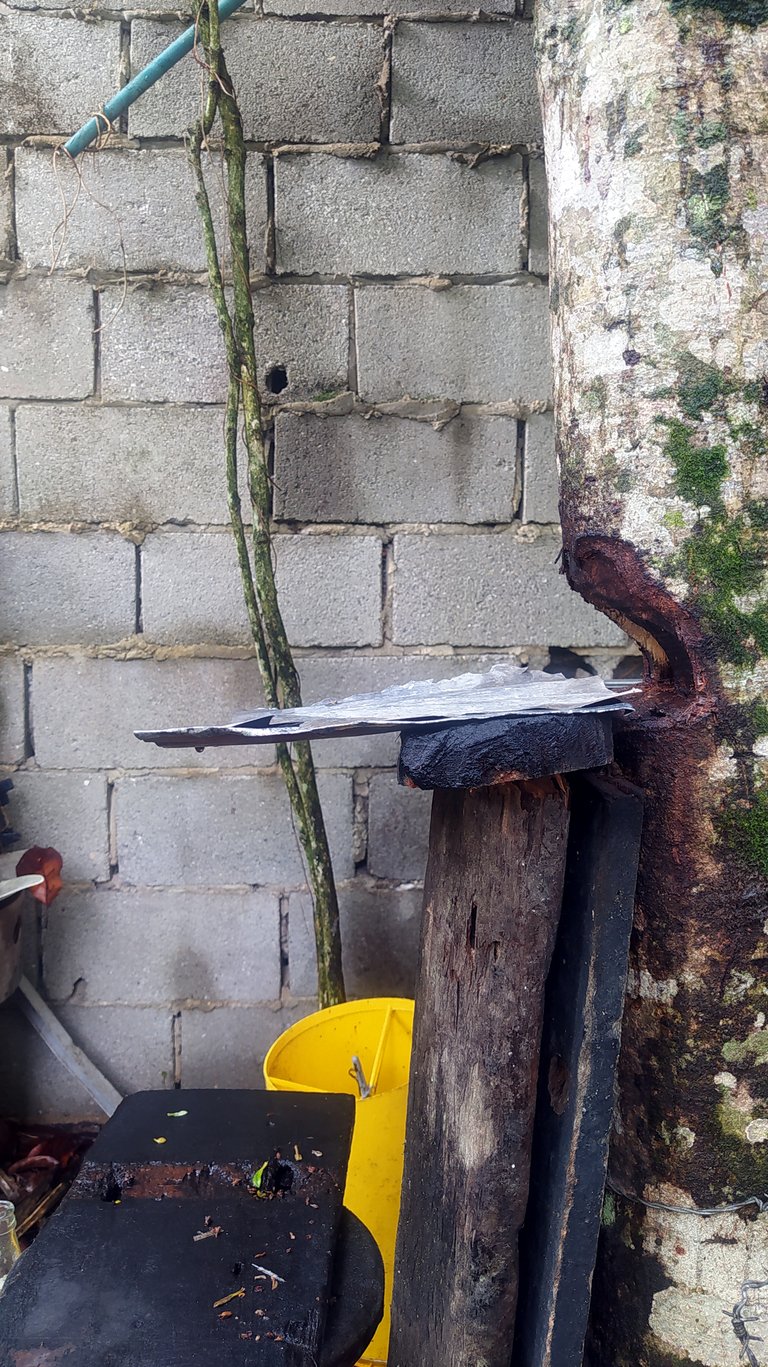 | 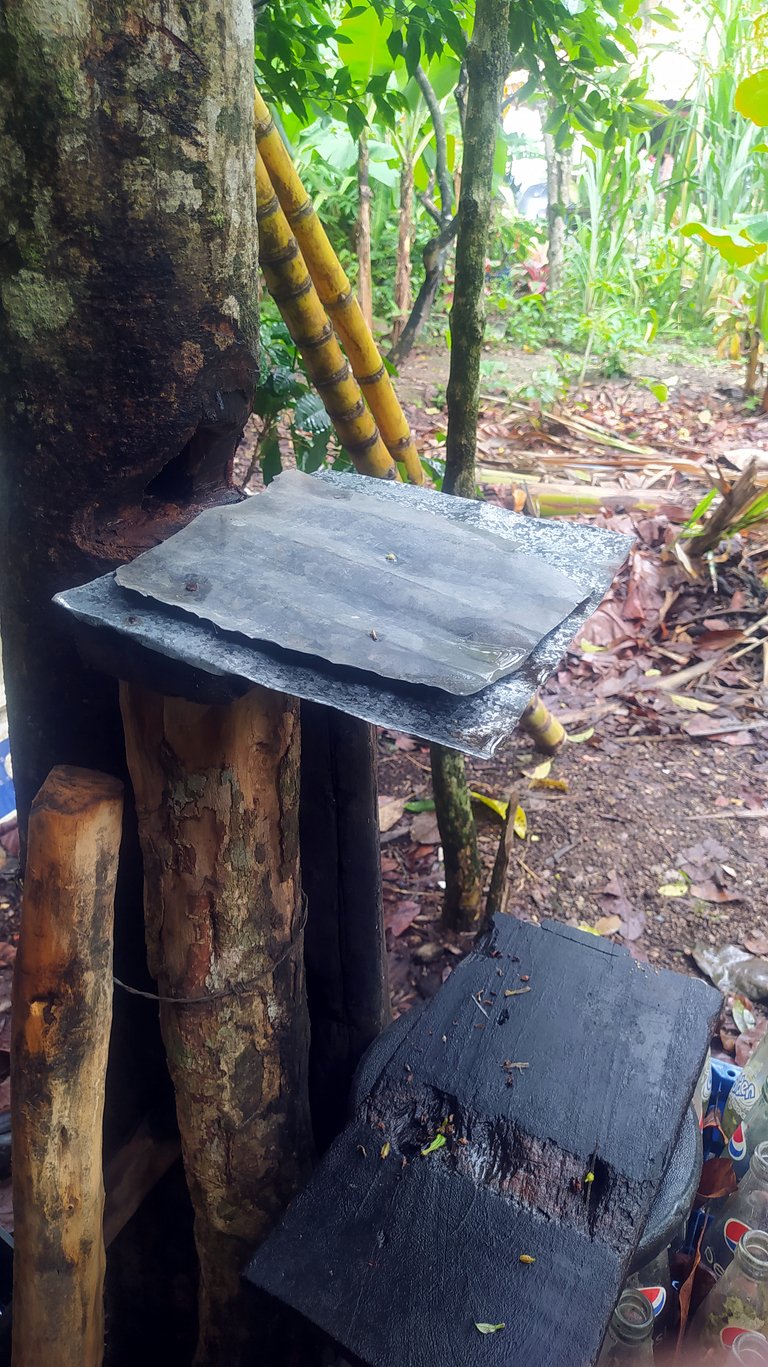 |
A cane crusher is a system made so that by means of a strong wooden stick (or maybe a metal tube) the sugar cane can be squeezed on a flat surface where the liquid will stay and thanks to a slight inclination towards the front it can fall into a container. The stick (or tube) is manipulated by a person levering on a fixed base. Well, this is an example that some things are easier to show than to explain. You'll see.
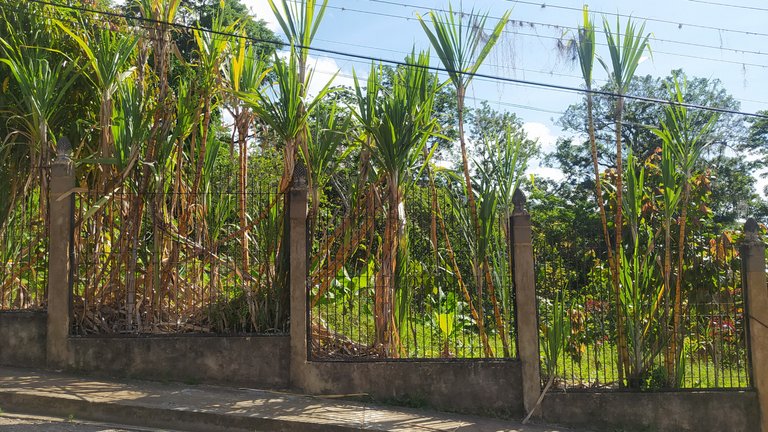
Before I explain the whole process, I want to tell you how I got the reeds. One of my neighbors has a lot of canes on a piece of land. They are so tall that they reach the height of the public power line. So one day I told him to sell me some canes to try the crusher that another neighbor and friend, named Vicente, had. However, he proposed that he would give me the canes if I gave him half of the juice we extracted. After consulting with Vicente, we agreed. My neighbor cut 14 canes, some of which were three meters long. A few days later, after a hearty breakfast, I carried them on my shoulder to Vicente's house. He helped me that morning to use the crusher.

Now let's detail the process!
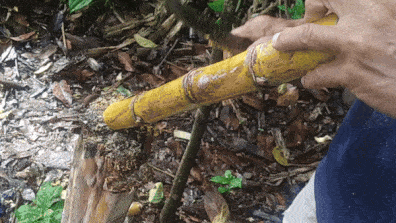
First, we divided the canes into smaller pieces of about 50 centimeters on average. This would allow for better handling. Then, with a large knife we scrape the bark, removing all the impurities that adhere. Some people just wash them with water, but my friend Vicente told me that the best thing to do is to scrape them. This is tiring and repetitive.

When we finish scraping them, we chop the pieces lengthwise, because this way it will be easier to squeeze them, as the diameter will be smaller. Remember that I told you that the canes are generally hard. Each piece was placed on a table near the crusher. Once we finished preparing them all, it is time to crush.
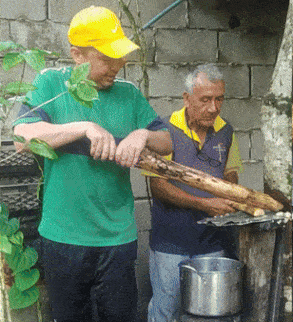
Vicente would place the cane between the flat surface of the crusher and the stick, as close as possible to the area where it would be levered. Then, I would execute the palanqueo, lowering the stick and squeezing the cane hard. Then I raise the stick and Vicente moves the rod a little to squeeze it in another area. I repeat the movement. Well, you can see it all in the picture.
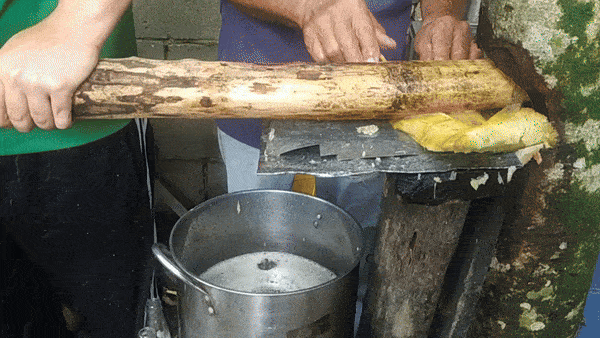
In this closer image you can see how generous one of these canes can be. The liquid seems to explode (as some lemons do). So the extraction area, our clothes, skin and face can be splashed with sweet juice. Little by little we keep repeating the process and we keep gathering the precious liquid.
After a couple of hours we had finished squeezing all the reeds. In the photo you can see only part of the liquid. We used a strainer to separate the pieces that might have fallen into the container and then we packed it in plastic bottles, tightly closed and took it to the fridge. That day we squeezed 5 canes and got 7.5 liters of juice. excellent!
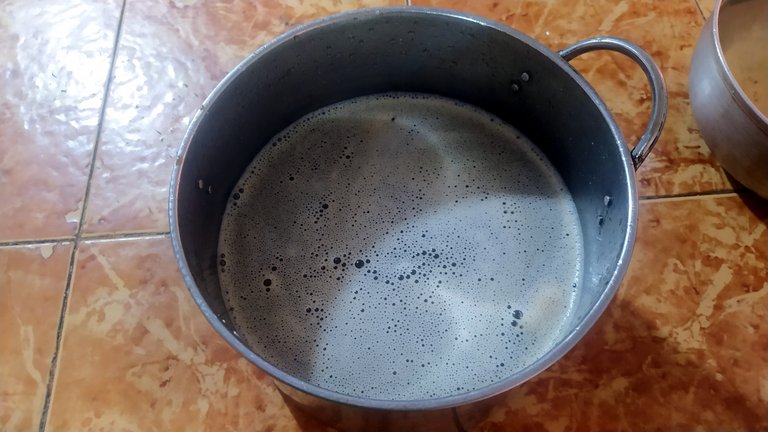
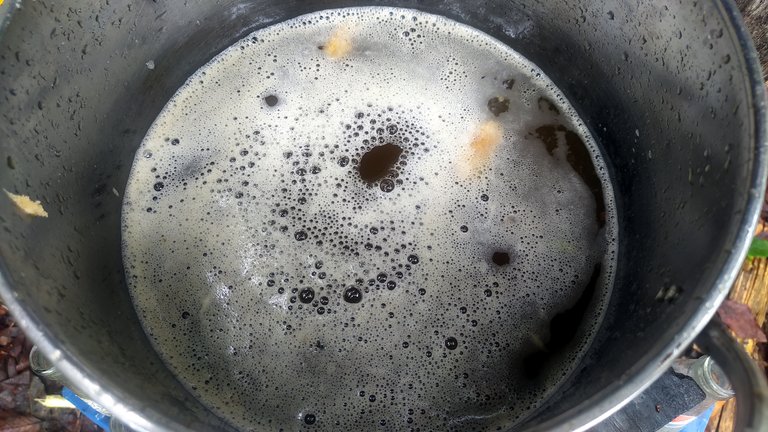
The urge for juice couldn't wait, so we drank some each, I admit. But we both knew it would be best to cool it down and drink it in a while. And so we did. The owner of the cañas was surprised to see all the juice we brought him as part of the deal. So much so, that a few days later he gave me more canes.
PREPARATION
Now, how do you serve this juice? Simple. Just set aside some of the cold juice and squeeze lemon to taste. Even so, the sweet taste is very strong, that's why many people add some cold water to serve it. I prepared a glass with pure juice, ice and lemon, garnished it with a small piece of lemon, and here it is: cold sugarcane guarapo with lemon!

This is how I recommend drinking sugarcane juice: cold and with lemon. Some people use it to sweeten coffee. They prepare the coffee purer than usual and then they add juice to it, adding more liquid, and then the coffee is at the desired point.
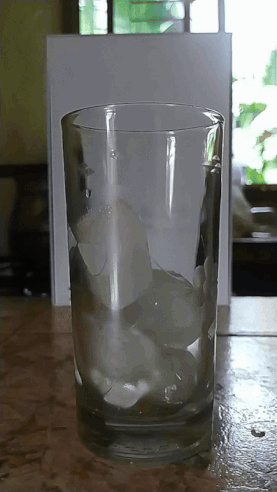
Final warning: this method of extraction is quite rudimentary. If you are not used to it, it will surely happen to you as it did to me: the muscle pain the following day will be considerable. I had to take muscle relaxants to cope with the pain, but I had cane juice!
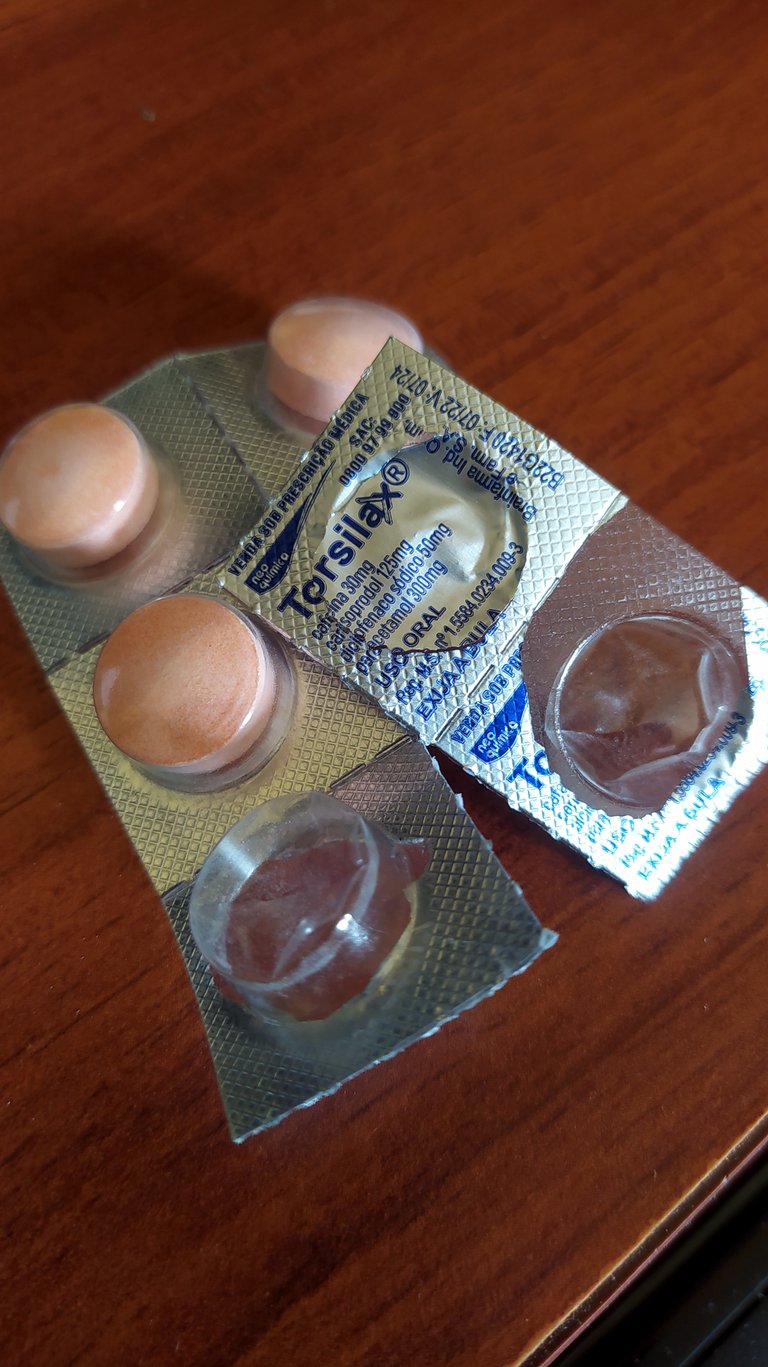
What I described to you today I did two more days, so that I could work all the canes that the neighbor gave me and fulfill my agreement. So I have achieved the knowledge and skill necessary to prepare this content. I'm glad I did something different, even though I'm physically strong. Yes, it feels like we are in prehistoric times, doesn't it? But now I have a new learning, I have a new friendship with Vicente, I am drinking a drink that I really like, and now I am showing this content to you. Do you like cane juice? Have you seen this extraction system? Would you dare to use it? I'll read you in the comments. Thanks for making it this far, see you next time!
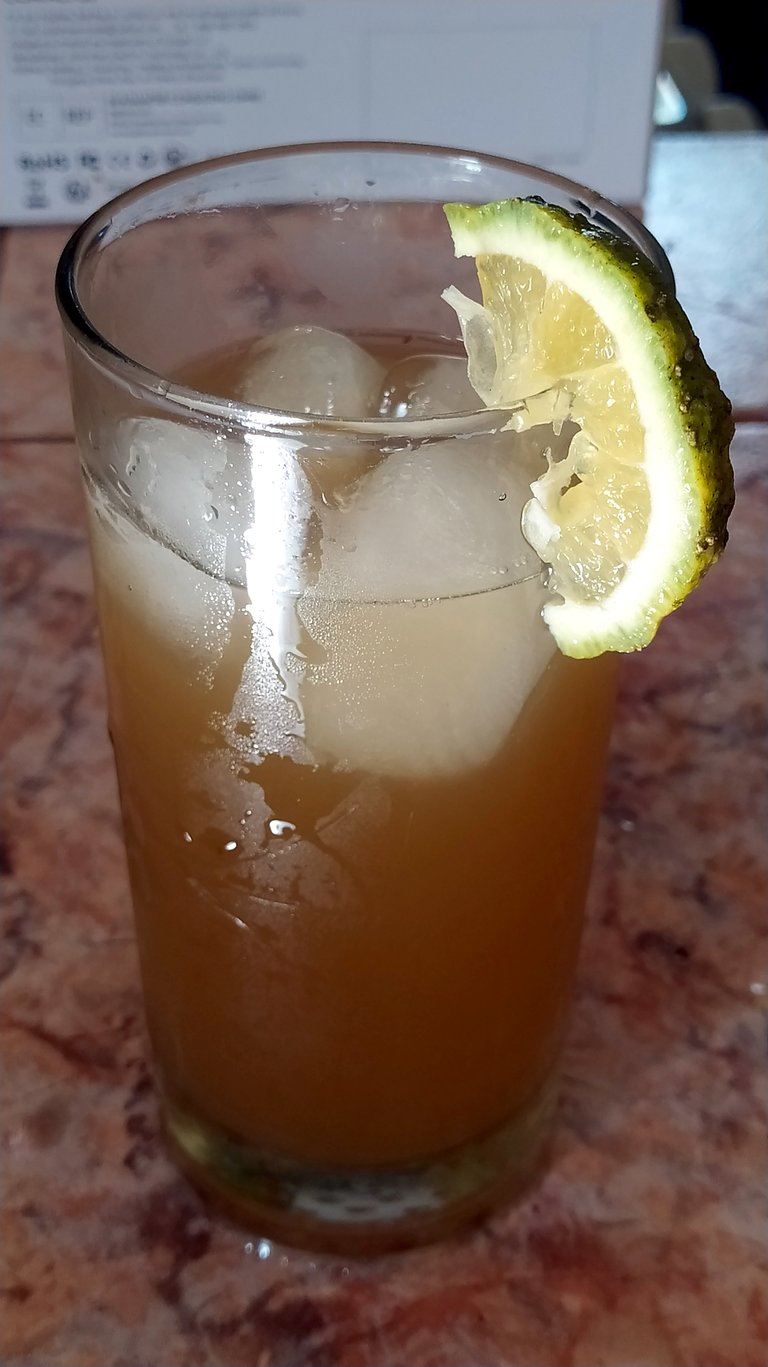




Guarapo de caña. Jugo de caña. ¿Cómo lo conoces tú? Nos referimos al líquido extremadamente dulce que se extrae de la caña de azúcar, una hierba dura y larga. Para la extracción, lo ideal es tener un trapiche. Si no has visto uno, fotografié una vez uno y lo mostré en éste post (es la única foto en formato vertical). Pero cuando no se encuentra uno, también sirve un "machucador de caña". ¿Qué es eso? Permite que te lo muestre, por favor.
 |  |
Un machucador de caña es un sistema fabricado para que mediante un palo de madera fuerte (o tal vez un tubo de metal) se pueda apretar a la caña de azúcar en una superficie plana donde el líquido se quedará y gracias a una leve inclinación hacia el frente podrá caer en un envase. El palo (o tubo) es manipulado por una persona haciendo palanqueo sobre una base fija. Bueno, esto es un ejemplo de que algunas cosas es más fácil mostrarlo que explicarlo. Ya lo verás.

Antes de explicar el proceso completo, quiero contarte de cómo obtuve las cañas. Uno de mis vecinos tiene muchas cañas en un terreno. Están tan altas que llegan a la altura del tendido eléctrico público. Así que un día le dije que me vendiera unas cañas para probar el machucador que tenía otro vecino y amigo, llamado Vicente. Sin embargo, él me propuso que me regalaba las cañas si le daba la mitad del jugo que extrajéramos. Luego de consultar con Vicente, aceptamos. Mi vecino cortó 14 cañas, algunas alcanzaban los tres metros de largo. A los pocos días, luego de un potente desayuno, me las llevé en el hombro a casa de Vicente. Él me ayudó esa mañana a usar el machucador.

Ahora sí. ¡Detallemos el proceso!

Primero, dividimos las cañas en pedazos más pequeños de unos 50 centímetros en promedio. Eso permitiría manipularlas mejor. Entonces, con un cuchillo grande raspamos la corteza, quitando todas las impurezas que se adhieren. Algunos sólo las lavan con agua, pero mi amigo Vicente me dijo que lo mejor es rasparlas. Esto es fatigoso y repetitivo.

Al terminar de rasparlas, picamos los trozos a lo largo, porque así será más fácil apretarlas, porque el diámetro será menor. Recuerden que les comenté que las cañas son generalmente duras. Cada trozo lo fuimos acomodando en una mesa cerca del machucador. Una vez que terminamos de prepararlas todas, es hora de machucar.

Vicente colocaba la caña entre la superficie plana del machucador y el palo, lo más cerca posible de la zona donde se palanquea. Entonces, yo ejecutaba el palanqueo, bajando el palo y apretando con fuerza la caña. Entonces levanto el palo y Vicente mueve un poco la caña para apretarla en otra zona. Yo repito el movimiento. Bueno, ahí todo se ve en la imagen.

En ésta imagen más cercana se puede ver lo generosa que puede ser una de esas cañas. El líquido parece explotar (como lo hacen algunos limones). Así que la zona de extracción, nuestra ropa, piel y rostro puede salpicarse con jugo dulce. Poco a poco seguimos repitiendo el proceso y vamos reuniendo el preciado líquido.
Al cabo de un par de horas habíamos terminado de exprimir todas las cañas. En la foto pueden ver sólo parte del líquido. Usamos un colador para separar los trozos que pudieron haber caido en el recipiente y entonces lo envasamos en botellas de plástico, bien cerrados y lo llevamos a la nevera. Ese día exprimimos 5 cañas y nos dio 7.5 litros de jugo. ¡Excelente!


Las ganas de tomar jugo no podía esperar, así que tomamos un poco cada uno, lo admito. Pero ambos sabíamos que lo mejor sería enfriarlo y tomarlo en un rato. Y así lo hicimos. El dueño de las cañas se sorprendió al ver todo el jugo que le llevamos como parte del trato. Tanto, que a los días me dio más cañas.
PREPARACIÓN
Ahora bien, ¿cómo se sirve éste jugo? Sencillo. Solo aparta un poco del jugo frío y exprímele limón al gusto. Aún así, es sumamente fuerte el sabor dulce, por eso muchos le agregan algo de agua fría para entonces servirlo. Yo preparé un vaso con jugo puro, hielo y limón, lo decoré con un trocito de limón, y aquí está: ¡Guarapo de caña con limón frío!

Así recomiendo tomar el jugo de caña: frío y con limón. Algunos lo usan para endulzar el café. Preparan el café más puro de lo habitual y entonces le agregan jugo, aportando más líquido, y entonces queda el café en el punto deseado.

Advertencia final: éste método de extracción es bastante rudimentario. Si no estás acostumbrado te pasará como a mí, seguramente: el dolor muscular al siguiente día será considerable. Yo tuve que tomar relajantes musculares para poder sobrellevar el dolor. ¡Pero tenía jugo de caña!

Lo que les describí hoy lo hice dos días más, para poder trabajar todas las cañas que me regaló el vecino y cumplir con mi acuerdo. Así que ya logré el conocimiento y habilidad necesaria para preparar éste contenido. Estoy contento de haber hecho algo diferente, a pesar de ser físicamente fuerte. Sí, parece que estuviéramos en la prehistoria, ¿no es cierto? Pero ahora tengo un nuevo aprendizaje, estreché mi amistad con Vicente, estoy tomando una bebida que me gusta mucho, y ahora estoy mostrándole éste contenido a ustedes. ¿Les gusta el jugo de caña? ¿Habían visto éste sistema de extracción? ¿Se atreverían a usarlo? Los leo en los comentarios. Gracias por llegar hasta aquí. ¡Hasta la próxima!

🥤

FUENTES / SOURCES
Images: Shot with my Xiaomi Redmi Note 8 phone and edited with GIMP || Imágenes: Realizadas con mi teléfono Xiaomi Redmi Note 8 y editadas con GIMP
GIF: I used images captured with my Xiaomi Redmi Note 8 phone and transformed for free in ezgif.com || GIF: usé imágenes capturadas con mi teléfono Xiaomi Redmi Note 8 y transformadas gratuitamente en ezgif.com
Banner: Made by me in GIMP with my own images and free resources from the site pfpmaker.com/ || Banner: Hecho por mi en GIMP con imágenes propias y recursos gratuitos del sitio pfpmaker.com/
Language: Post written in Spanish and then translated into English through DeepL || Idioma: Post redactado en español y luego traducido al inglés mediante DeepL/
Posted Using InLeo Alpha


